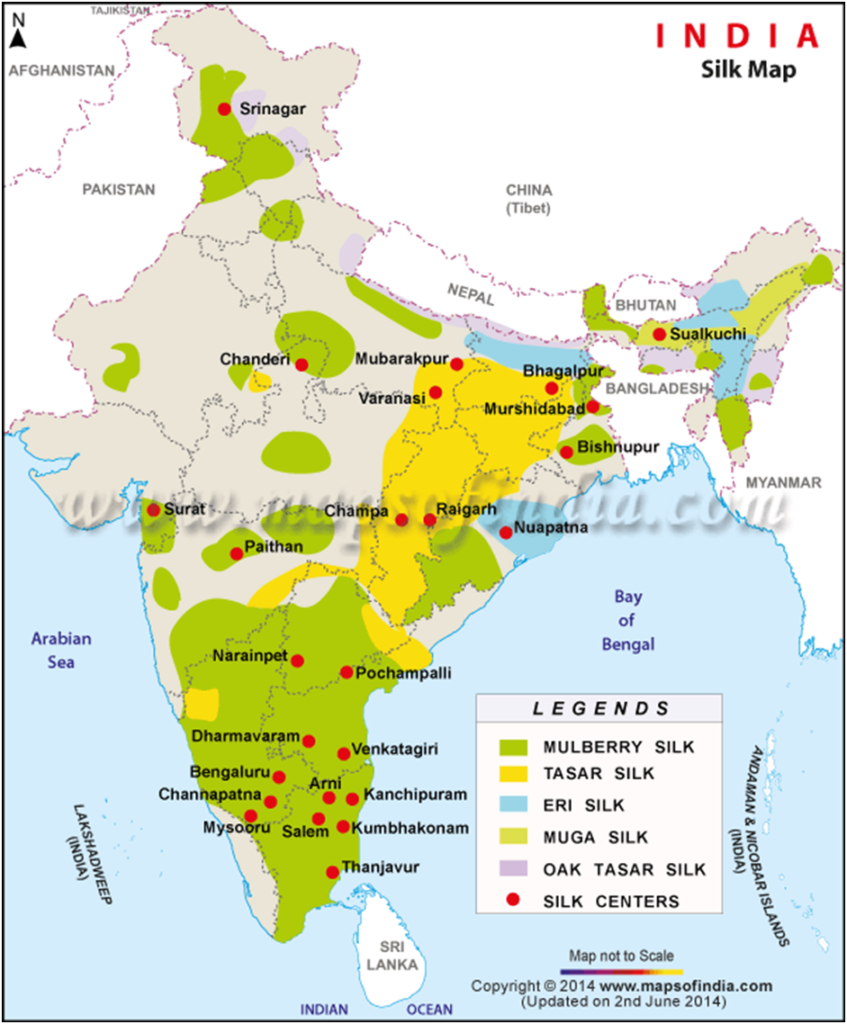
Silk Industry in China
China is the largest silk producer in the world. China produces alone more than 60 % of world’s silk.
Factors leading to the development of Silk Industry in China
o Temperate and tropical climate suitable for growth of silk varieties.
o Lower Yangtze valley has the finest white mulberry silk.
o Chinese scientists developed hybrid varieties using Japanese and European silkworms. It is possible to rear silkworms seven times a year.
o China was the first country to start sericulture so labour is abundant and skilled.
o Sericulture is done via cooperatives (Silk Communes) so more efficient and standard production compared to individual farmer.
o Government provides extension service, training etc.
In the 90s, Chinese government upgraded silk machinery with imported parts which improved quality of silk yarn
Silk Industry in India
India is the second largest producer of silk in the world after China. About 97% of the raw mulberry silk comes from six Indian states, namely, Andhra Pradesh, Karnataka, Jammu and Kashmir, Tamil Nadu, Bihar, and West Bengal.
In the northeastern state of Assam, three different types of indigenous variety of silk are produced, collectively called Assam silk: Muga silk, Eri silk and Pat silk. Muga, the golden silk, and Eri are produced by silkworms that are native only to Assam.

Factors leading to the development of Silk Industry in China
• Mulberry plants can be grown in any type of soil even in forest fringes, hill slopes and can withstand drought.
• Works well in non-green revolution, non-irrigated areas of East and NE India.
• Sericulture does not involve hard labour.

• Silkworms can be reared by women and old people . In eastern States, farmers earlier used to grow Jute but Jute demand declined so they shifted to Sericulture.
• In Karnataka mulberry grows easily due to climate. Bombyx variety of silk worm can be reared throughout the year. Karnataka uses hybrids of silkworm and can harvest five to six times a year.
• Works on simple technology, no sophisticated equipment needed and can be done by small and marginal farmers, tribal

Why Kanchipuram has developed as a hub of silk industry?
Kanchipuram is a small town located on the Palar river in Tamil Nadu. Also called Kanchi, the town is renowned for its silk industry and its temples. The Kanchipuram silk sari has been recognized as a Geographical indication (GI) by the Government of India in 2005–2006.
Reasons for development of silk industry in Kanchipuram
• Raw silk from Karnataka ,Zari threads from Surat, Gujarat
• Generations of silk weavers so skilled labour is abundant
• Market still has great demand for this industry.
